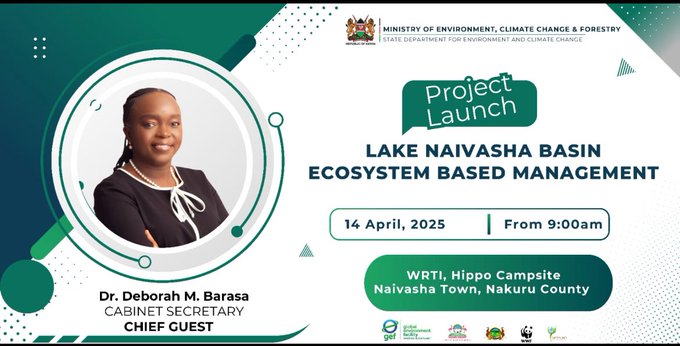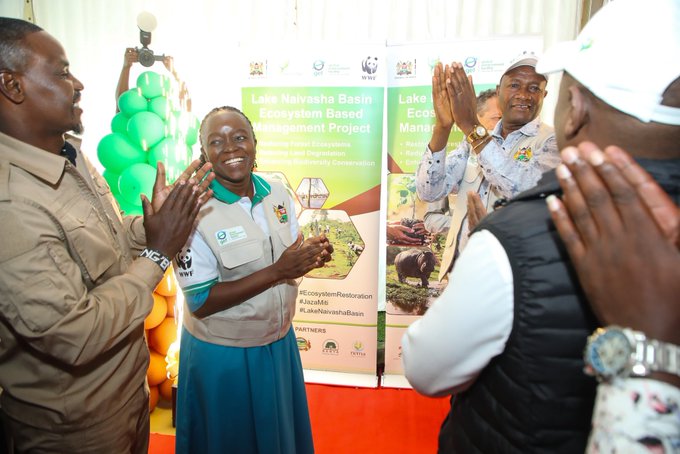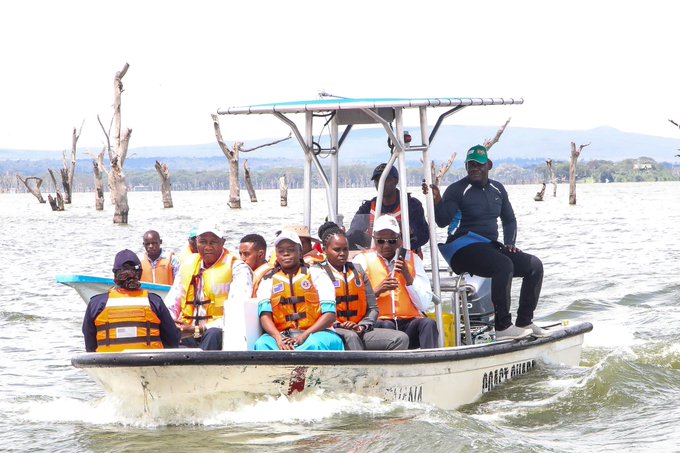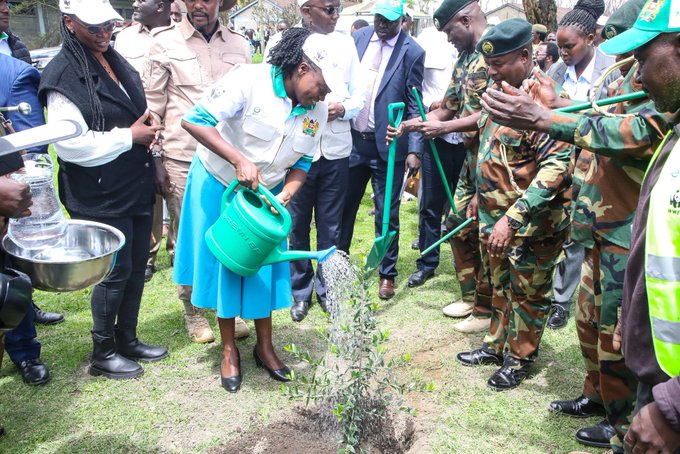NAIVASHA, Kenya – The government has secured $1.78 million (approximately Sh230.85 million) from the Global Environment Facility (GEF) to support the restoration of the Lake Naivasha ecosystem through the National Environment Trust Fund (NETFUND).
The Lake Naivasha Basin’s land degradation will be lessened, and forest ecosystems will be restored thanks to the financing.
Restoring watershed and riparian land in strategic areas throughout the basin is the main goal of the three-year initiative.
Speaking in Naivasha, Dr. Deborah Barasa, Cabinet Secretary (CS) for Environment, Climate Change, and Forestry, stated that the Lake Naivasha basin is an important natural resource for the area’s wildlife and plants.
“It sustains livelihoods through tourism and fishing in Lake Naivasha, as well as agriculture in the Aberdare highlands,” said the CS.
Join us on Monday 14th April 2025 for the launch of @theGEF funded Lake Naivasha Basin Ecosystem Based Management Project @WRTIKenya, Naivasha Town. I will officiate the event and will be hosted by @NakuruCountyGov and @NyandaruaCG018 leadership #GEFProjectLaunch
Dr. Barasa did, however, voice concern about the many environmental issues the lake basin is currently dealing with.
Why is there a need to protect the Lake Naivasha Ecosystem Basin
The region’s wildlife, vegetation, and many people’s livelihoods could all suffer greatly if these issues are not resolved.
The basin, which stretches from the Aberdare Ranges to the downstream region of Lake Naivasha, offers fertile agricultural grounds that sustain farming operations, according to the CS.
The CS further disclosed that the use of chemicals on farmlands, hotel sector effluents, encroachment on riparian regions, and unsustainable agricultural practices are the main causes of the basin’s many problems.
“If this trend continues, we will soon lose the vital ecosystem services that thousands of people depend on,” she said.
Dr. Barasa addressed this by stressing that the project’s timely and careful execution would result in important benefits, such as better basin governance, restored forest and wetland ecosystems, sustainable land management, and improved ecosystem services, including higher fish output.
“The sustainable management of the Lake Naivasha Basin Ecosystem necessitates collaboration, support, and contributions from all governmental levels, the private sector, non-governmental organisations, and local communities that are the stewards of these landscapes,” Dr. Barasa said.
What are some of the wildlife found around the Lake Naivasha Basin
Dr. Barasa also called for coordinated efforts from all stakeholders in the ecosystem’s conservation.
“The initiative aligns well with key government priorities, including my ministry’s strategic focus areas on biodiversity conservation, environmental and forest restoration, and climate change action,” she stated.
According to NETFUND Chief Executive Officer Samson Toniok, the project would make it possible to preserve important forests in Nyandarua County, such as the 22,000 hectares that make up Geta forest in the same county, 6,600 hectares in South Kinangop, and 6,800 hectares in North Kinangop.
Today, we marked a major milestone in Kenya’s environmental journey with the official launch of the Lake Naivasha Basin Ecosystem Management Project.This initiative, supported by the Global Environment Facility and WWF-Kenya, is a bold step toward restoring one of our country’s
The Kenyan government’s three-year Lake Naivasha Basin Ecosystem Management Project aims to prevent the lake from going extinct.
Lake Naivasha is a wetland of worldwide significance since it has been designated as a Ramsar site. Hippos, flamingos, more than 400 bird species, and a thriving fishing population are among the varied animals that call it home.
In addition, it is a popular tourist destination and the site of international competitions like the World Rally Championship (WRC). However, pollution, biodiversity loss, and degradation pose a threat to this national asset.








